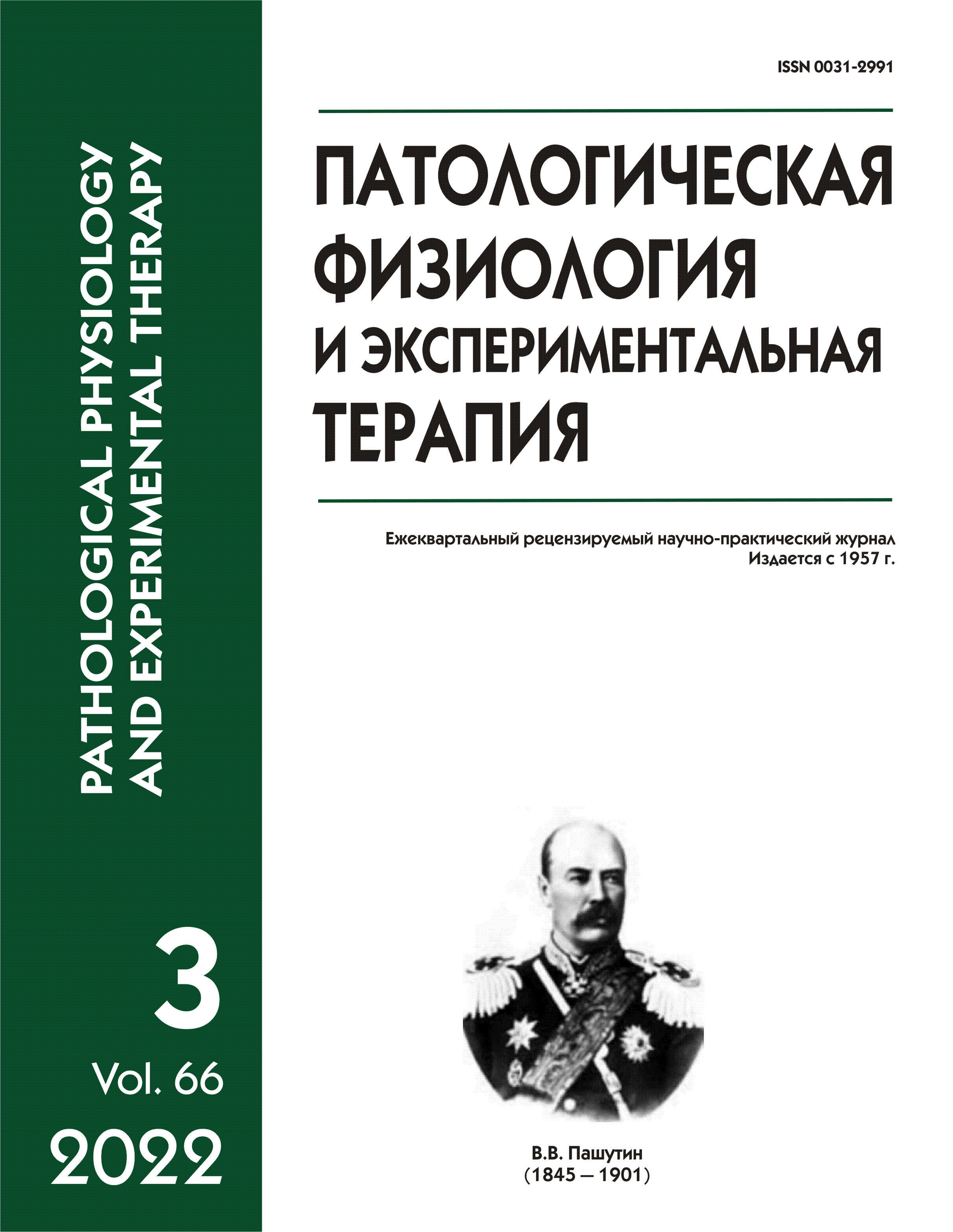Activation of reparative liver regeneration using stem cells
Abstract
Despite the advances of modern medicine, restoring the structure and function of the liver after its damage continues to be relevant. Aim: This study investigated mechanisms that influence different combinations of stem cells for activating reparative liver regeneration after partial hepatectomy. Methods. Experiments were performed on mature, white, outbred male mice. Multipotent mesenchymal stromal cells (MMSCs) were isolated and cultured and hematopoietic stem cells (HPSCs) were isolated from the chorion of the placenta of female mice aged 3-4 mos. Hepatic stellate cells (HSC) were isolated from the liver of 15 mice aged 6-8 mos. Two experimental groups and one control group were studied. MMSC, 12 × 104 cells; HPSC, 104 cells; and HSC, 27 × 104 cells were injected into the lateral caudal vein of each experimental mouse. The cells were suspended in 0.2 ml of 0.9% NaCl solution. Control group animals were injected with 0.2 ml of 0.9% NaCl solution. The cells were injected under physiological conditions and 1 hr after partial hepatectomy. A comparison group was also identified; it consisted of animals without partial hepatectomy and without the injection of cells. To assess the morpho-functional state of the liver, blood biochemistry and liver morphometry were studied at 1, 3, and 7 days after the cell injection. To assess the intensity of reparative processes in liver cells, the amount of poly(ADP-ribose) polymer, a product of polyADP ribosylation, was measured. Hepatocyte growth factor (HGF) was determined in the blood serum. Results. The combined transplantation of MMSCs and HPSCs, as well as MMSCs and HSCs, was associated with activation of the mitotic activity of hepatocytes, inhibition of programmed hepatocyte death, restoration of liver morphometric parameters, and normalization of blood biochemical parameters. At the same time, the administration of MMSCs and HSCs showed a more pronounced effect on the restoration of the morpho-functional state of the liver compared with the transplantation of MMSCs and HPSCs. Conclusion. To correct the morpho-functional state of the liver after partial hepatectomy, combined transplantation of MMSC and HSCs is advisable. One of the key mechanisms of the action of MMSCs is the activation of the DNA repair system, which results in a decrease in programmed cell death, i.e., a decrease in the rate of pathological mitoses.






